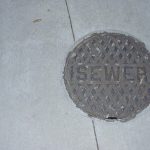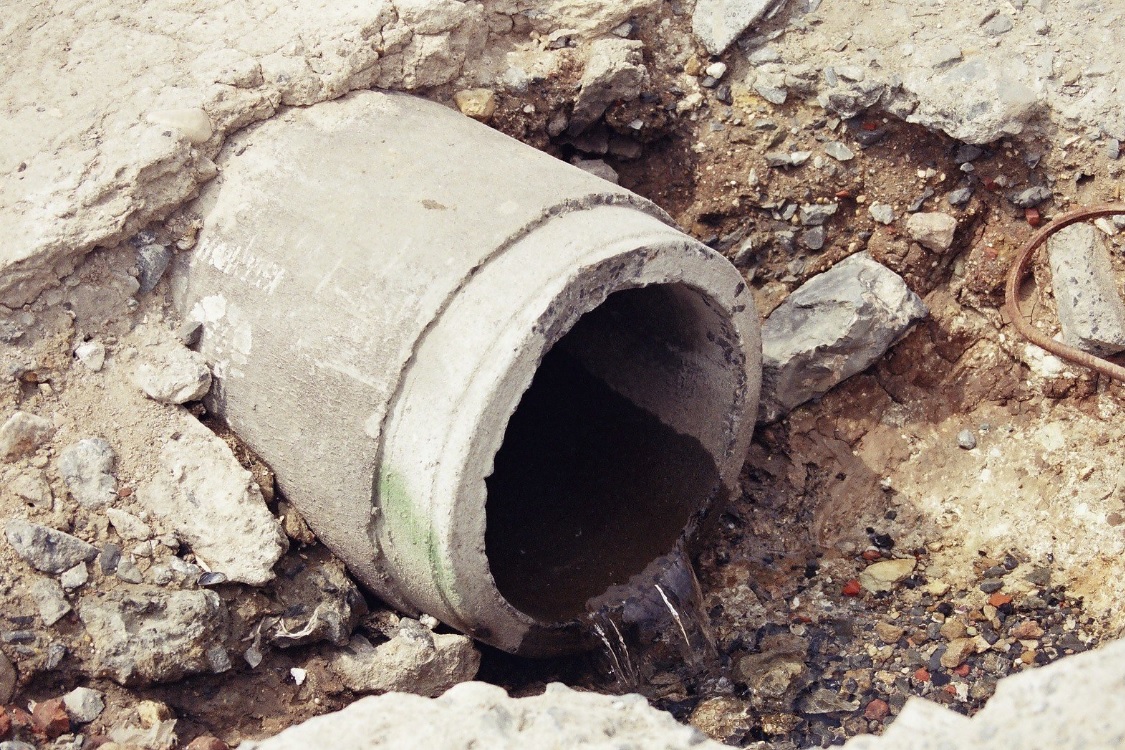When repairing or replacing damaged pipes and sewer lines in Los Angeles, one of the most crucial decisions that property owners will have to make is between trenchless and traditional repair methods. This affects your overall cost and the time spent on the project, not to mention the overall disturbance of your property. With improving technology, trenchless methods are becoming more prevalent in LA due to their efficiency and relatively non-invasive nature. The traditional methods of repair, however, remain appropriate under certain circumstances around the city. This guidewill explore both approaches in-depth to let you understand the pros and cons of each method, thus allowing you to make an informed decision for your specific situation.
What to Know About Pipe and Sewer Repairs
Before getting into the technicality of trenchless versus traditional repair, it’s essential to explain why pipes and sewers need to be repaired in the first place. Basically, due to usage time or other factors such as:
- Age and wear
- Tree root intrusion
- Ground shifting
- Corrosion
- Poor installation
- Blockages and buildup
If these problems strike, fast repair is paramount for the prevention of further damage to your home or business, ensuring proper sanitation and stoping potential water damage that may be pretty expensive.
Trenchless pipe and sewer repair
Trenchless pipe and sewer repair is the modern approach to rehabilitating or replacing underground pipes with minimal disruption to the surface. Innovative plumbing revolutionizes a much less intrusive method compared to traditional excavation techniques to fix the pipes. Advanced technology used in trenchless repair accesses and repairs the pipes only through minor access points; it usually requires one or two small holes rather than long, open trenches.
The significant advantage of trenchless methods is that they can help maintain the landscapes, driveways, or other surface structures while solving the problems affecting the underground pipes. This may come in very handy in an urban setting or anywhere that requires minimal disturbance. These trenchless techniques are versatile solutions that can be adapted to various pipe materials and sizes, thus fitting into the different kinds of repairs.
Common Trenchless Repair Methods
Advanced trenchless pipe repair technologies provide a variety of solutions for the rehabilitation of damaged underground pipes with minimal surface disruption. These methods are:
Cured-in-Place Pipe (CIPP)
CIPP is also one of the most popular trenchless methods that use a resin-saturated flexible liner installed inside the damaged pipeline. The liner itself may consist of fiber-reinforced fabric or non-woven polyester designed to bear every kind of environmental pressure. It is installed through an existing pipe that has already been extensively cleaned and inspected. This liner is cured using heat or UV light produced by a new pipe inside the old one. Aside from cracks and holes, joint failures are usually well-repaired without diminishing flow capacity.
Pipe Bursting
This technique involves the complete replacement of pipes whereby a conical bursting head is introduced into the pipe. It breaks it, displacing the fragments into the surrounding floors and, at the same time, pulls in a new pipe. Pipe bursting allows upsizing, working on various pipe materials, but works poorly in areas with many utilities or unstable soil.
Mechanical Spot Repair
Mechanical spot repair is quite effective in such scenarios of localized damage. A specially designed sleeve, generally made with a stainless-steel core and a foam gasket impregnated with grout, is inserted into the pipe. Positioned over the damaged section by a robotic device, the sleeve is then expanded to seal. It works particularly well for small cracks or joint separations without extensive replacement.
Grout-in-Place Pipe
This technique creates a new pipe inside the existing one with fabric lining and grout. A flexible liner is pulled into the damaged pipeline with external studs, providing space between the liner and the host pipe. Fill up this space with specially formulated grout. It creates a rigid and new pipe when cured, thus overcoming structural damages and improving flow characteristics.
The Process of Trenchless Repair
While specific steps will vary depending on the method utilized, in general, trenchless repair follows a general process:By utilizing state-of-the-art video camera technology in inspecting the damaged pipe, it becomes possible to gauge the extent of the damage and know its nature.
- Video Inspection: By utilizing state-of-the-art video camera technology in inspecting the damaged pipe, it becomes possible to gauge the extent of the damage and know its nature.
- Cleaning: Debris, scale, and other impediments are cleaned from the existing pipe to let repair processes take place.
- Repair or Replacement: Depending on the chosen method, a new liner would be inserted, the pipe would be burst, or the spot repair would already be in place.
- Curing or Setting: This is where, for instance, a CIPP method cures the new liner in place. In others, like grout-based fusions, the material is allowed to be set.
- Reconnect: All service lines and lateral connections are reconnected to the newly repaired or replaced pipe.
- Final Inspection: Finally, a post-repair inspection will be conducted to guarantee the success of the repair and check the integrity of the new pipe bucked.
Advantages of Trenchless Repair
Least Disruption of the Surface
Probably, this is one of the significant advantages of trenchless works-avoiding the destruction of a large portion of the landscape, driveway, or any other structure lying on the surface. This prevents property damage and prevents much restoration work from happening, thereby resulting in time and money saved.
Time Efficiency
Most trenchless repairs may be carried out in much less time than conventional excavation methods. Fast turnarounds keep any disruptions to daily activities at bay, and this can help commercial properties where every minute comes right from the bottom line.
Cost Effectiveness
While the trenchless repair technique is a bit expensive, to begin with, it generally tends to be inexpensive in the long term due to less restoration of landscape works, lessened project time, and reduced workforce. The long life of trenchless repairs also makes them cost-effective in the long run.
Versatility
Trenchless methods can be used on any pipe material, size, and depth. They mainly come in handy when working on troublesome locations where conventional excavation could be next to impossible, such as under buildings, roads, or waterways.
Environmental Benefits
Because trenchless methods do not involve massive earth disturbance, they tend to inflict less damage on the environment than the traditional ones. Many also make use of eco-friendly materials, and results in less waste when compared to conventional excavation.
Trenchless Repair Disadvantages
Limited Visual Inspection
Unlike the traditional method where the pipe is fully open to view, trenchless repairs rely almost solely on camera inspections. This sometimes allows for missed problems or complications that one might have been able to see during an open excavation.
Technical Limitations
Not all trenchless techniques are suitable for various damage or pipe conditions. For instance, those pipes with severe structural damage or several bends cannot be treated by some trenchless techniques.
Specialized Equipment and Expertise
Trenchless repairs call for specialized equipment and highly trained technicians, which can limit their availability-especially in certain areas-and potentially increase cost.
Unexpected Complications
Though uncommon, these may include liner installation problems or other unforeseen obstructions during trenchless repair that may become harder to correct without direct access to the pipe.
Traditional Pipe and Sewer Repair
Traditional pipe and sewer repair, otherwise known as open-cut or dig-and-replace, physically consists of excavating the ground over a pipe directly to access and then repairing or replacing it with damage. This time-tested approach was the standard many years ago and still works in some cases today. Traditional repair allows for a complete visual inspection of the damaged area and surrounding soil conditions, providing a clear understanding of the problem.
While likely to be more disruptive and time-consuming than the trenchless methods, this may have advantages in some situations. For instance, if there is extensive damage, collapsed pipes, or significant changes are to be done to the piping, traditional repair methods are most appropriate.
The Process of Traditional Repair
The traditional process of repair normally includes the following steps:
- Locating the Damage: This stage identifies the damage by camera inspection technology, which will help a plumber precisely locate the damage and its extent so that no unnecessary excavation takes place.
- Site Preparation: The area above the damaged pipe is prepared for excavation. This may involve removing landscaping, concrete, or other surface structures.
- Excavation: A trench is dug out to expose the pipe line with damage using heavy machinery. The trench size will depend on the depth and the quantum of repair works.
- Pipe Repair or Replacement: The exposed spoiled length of the pipe is repaired or completely replaced. This will involve cutting out the badly damaged part and fitting a new piece in, or sometimes a total replacement of the whole length.
- Testing: The pipe is tested after the repair or replacement for proper functioning and any possible leakage.
- Backfilling: On completion of a successful repair, filling of the trench shall be done with suitable materials; this process is primarily filled in a series of layers to compact.
- Restoration of the Surface: This will involve restoring as much as possible the surface to its original state. This may include repaving, replanting of grass, or reconstruction of other features on the surface.
Advantages of Traditional Repair
Fully Exposed Inspection
Open excavation will let one have an excellent visual inspection of the pipe and surrounding soil conditions. This is particularly useful when dealing with complex issues and when assessing the general condition of the piping system.
Versatility
It can cope with almost all types of pipe irregularities, be it severe damage, collapsed pipes, or even situations where extreme changes in the piping layout are needed. Traditional methods, therefore, have the upper hand in places where extensive work is required.
Familiarity and Accessibility
Most plumbers are familiar with conventional ways of repair, so it’s readily available in most areas. The simplicity of the work could further add to the advantage where unexpected issues that turn up during a repair can be more accessible to attend to.
Permanent Solution
In case the damage is terrible or if your infrastructure is too old, then one traditional complete replacement of the pipes can be a thorough and long-term solution, one that won’t fix just the current problem but also the next ones in line.
Disadvantages of Traditional Repair
Surface Disruption
The most significant drawback of traditional repair is that it requires a tremendous amount of excavation work, and this may mean considerable destruction to landscapes, driveways, or other structures on top, which involves expensive restoration.
Time-Consuming
Traditional repairs take much longer due to the time needed for excavation and restorations. This long time frame can be a particular issue in commercial properties or when fast maintenance is crucial.
Higher Total Cost
While the fix itself might be less expensive compared to some trenchless methods, the total cost can still be higher by far once excavation, labor, and restoration costs are factored in.
Environmental Impact
More interference with the natural environment is expected in excavation, like soil disturbance, breakdown, damage to root systems, and a large quantity of fuel burned by heavy machinery.
Selecting the Correct Method for Your Project
The choice between trenchless and traditional approaches will have to be based on parameters unique to each project. Some of the key considerations that have to be taken into account include:
The extent of Damage
Assess the magnitude of damage to the pipes. Minor to moderate problems are often repairable with trenchless methods. The more serious the damage, the more likely traditional excavation will be necessary.
Pipe Location
Pipes buried deeper or closer to building structures or other utilities make trenchless methods more effective. Also, these methods are helpful in inaccessible areas like buildings or major highways. In contrast, the more conventional techniques might be more pragmatic if large amounts of excavation need to be done anyway for other purposes.
Soil Conditions
The type of soil and its stability must be considered as specific trenchless techniques are tricky to execute in unstable or rocky soils. Traditional excavation, on the other hand, will give better assessment and management of the soil. In areas with high water tables or contaminated soil, trenchless methods may be preferred to minimize the environmental impacts.
Budget Constraints
While considering costs, remember to include not only the cost of repair but also restoration time and possible long-term savings. Proper cost-benefit analysis information on immediate repair costs, surface restoration, the total duration of the project, and the lifetime expected from the repair has to be presented.
Time Limitations
If minimal downtime is of importance, then trenchless options typically have this significant advantage with respect to time taken for the project. This can be most critical for commercial properties or other situations where more extended disruption may not be possible.
Future Plans
Consider any plans in property development or landscaping. If major works are planned shortly, this may decide the verdict on the preservation of the surface, which favors trenchless technology or using the opportunity for more work and opting for traditional methods.
Pipe Material and Age
Pipe material and age can affect the decision on repair methods. Some older materials should be replaced entirely rather than rehabilitated, while other pipes may be perfect candidates for trenchless rehabilitation.
Local Regulations
One must know the local building codes and regulations that may affect the choice of the repair method. Some areas require or disallow specific pipe repair techniques at times.
The Role of Professional Assessment
A professional assessment is essential in making your choice between the trenchless and traditional ways of pipe repair. Seasoned plumbing professionals in Los Angeles can offer advice of great value after due evaluation of your property’s unique situation. This will most likely include camera inspections, soil analysis, property evaluation, cost-benefit analysis, and assurance of compliance with regulatory provisions. By engaging professional expertise, you will be better placed to decide when it is necessary to balance immediate needs against long-term considerations to ensure the most effective and efficient solution for a pipe and sewer repair project.
Final Thoughts
The choice between trenchless and traditional methods of pipe and sewer repair is not always straightforward. Each has its strengths and limitations, and very often, the best choice is determined by different factors unique to the situation. Trenchless methods offer enormous advantages in terms of minimal surface disruption, time efficiency, and, quite frequently, a lower overall cost. There is some value to traditional repair techniques, more so in cases with severe damage or where comprehensive replacement of pipes may be required.
As time goes on and new technology is introduced, trenchless methods will no doubt become even more sophisticated. But traditional ways of repairing pipes will always exist within the plumbing industry. The key for property owners is to work closely with experienced professionals in assessing their specific needs and choosing the method that ensures the best combination of effectiveness, efficiency, and long-term value.





